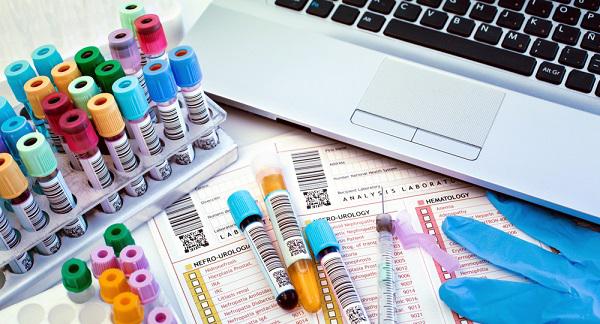What happens during a pneumococcal disease test?
The type of pneumococcal disease test you have is usually based on your symptoms. If you have a mild infection, such as an ear or sinus infection, your provider may diagnose and treat you based on your symptoms, medical history, and a physical exam.
Depending on your symptoms, your provider may want a sample of certain body fluids. They may want one or more samples, which could be from your:
- Blood
- Urine
- Sputum
- Nostrils (nasopharyngeal swab)
- Cerebrospinal fluid (CSF)
Your provider may order a pneumococcal culture, pneumococcal antigen test, and/or a pneumococcal PCR test to help identify the bacteria.
Your sample may be tested using a Gram Stain and/or bacterial culture which involves growing bacteria in your sample to help identify what type is causing your infection. Knowing the cause may help your provider figure out which antibiotic will work best, since some pneumococcal bacteria may have become resistant to certain antibiotics.
During a blood test:
If your provider thinks you might have meningitis or a bloodstream infection, they may collect a blood sample for a pneumococcal PCR test.
A health care professional will take a blood sample from a vein in your arm, using a small needle. After the needle is inserted, a small amount of blood will be collected into a test tube or vial. You may feel a little sting when the needle goes in or out. This usually takes less than five minutes.
During a clean catch urine test:
If your provider suspects that you might have pneumonia, they may want a urine sample for a pneumococcal antigen test, which is often used to test for the pneumococcal bacteria.
You will need to give a urine sample for the test. A health care professional may give you a cleansing wipe, a small container, and instructions for how to use the “clean catch” method to collect your urine sample. It’s important to follow these instructions so that germs from your skin don’t get into the sample:
- Wash your hands with soap and water and dry them.
- Open the container without touching the inside.
- Clean your genital area with the cleansing wipe:
- For a penis, wipe the entire head (end) of the penis. If you have a foreskin, pull it back first.
- For a vagina, separate the labia (the folds of skin around the vagina) and wipe the inner sides from front to back.
- Urinate into the toilet for a few seconds and then stop the flow. Start urinating again, this time into the container. Don’t let the container touch your body.
- Collect at least an ounce or two of urine into the container. The container should have markings to show how much urine is needed.
- Finish urinating into the toilet.
- Put the cap on the container and return it as instructed.
If you have hemorrhoids that bleed or are having your menstrual period, tell your provider before your test.
During a sputum test:
Your provider may request a sputum sample for a pneumococcal culture. Sputum is a thick type of mucus made in your lungs. If you have an infection or chronic illness affecting your lungs or airways, sputum can settle in your lungs, and you can also cough it up. During the sputum test:
- You may be asked to rinse your mouth with water before the sample is taken.
- Your provider will ask you to breathe deeply and then cough deeply into a special cup.
- Your provider may tap you on the chest to help loosen sputum from your lungs.
- If you have trouble coughing up enough sputum, your provider may ask you to breathe in a salty mist to help you cough more deeply.
During a nasal swab test:
Your provider may want to do a pneumococcal culture with a sample of cells from inside your nostrils or from the nasopharynx, the uppermost part of your nose and throat.
During a nasopharyngeal (NP) swab:
- You will tilt your head back.
- Your provider will insert a long swab into your nostril until it reaches your nasopharynx (the upper part of your throat).
- Your provider will rotate the swab for 10 to 15 seconds and remove it.
If your provider gets enough of a sample from one of your nostrils, they may only need to do one. But they may need to get a sample from your other nostril as well if they had trouble getting the sample from the first side.
During a spinal tap:
If your provider thinks you might have meningitis or a bloodstream infection, they may collect a sample of your cerebrospinal fluid for a pneumococcal antigen test.
To get a sample of cerebrospinal fluid, a provider will do a procedure called a spinal tap, also known as a lumbar puncture. A spinal tap is usually done in a hospital. During the procedure:
- You will lie on your side or sit on an exam table.
- A provider will clean your back and inject an anesthetic into your skin, so you won’t feel pain during the procedure. Your provider may put a numbing cream on your back before this injection.
- When the area on your back is completely numb, your provider will insert a thin, hollow needle between two vertebrae in your lower spine. Vertebrae are the small backbones that make up your spine.
- Your provider will withdraw a small amount of cerebrospinal fluid for testing. This will take about five minutes.
- You’ll need to stay very still while the fluid is being withdrawn.
- Your provider may ask you to lie on your back for an hour or two after the procedure. This may prevent you from getting a headache afterward.


